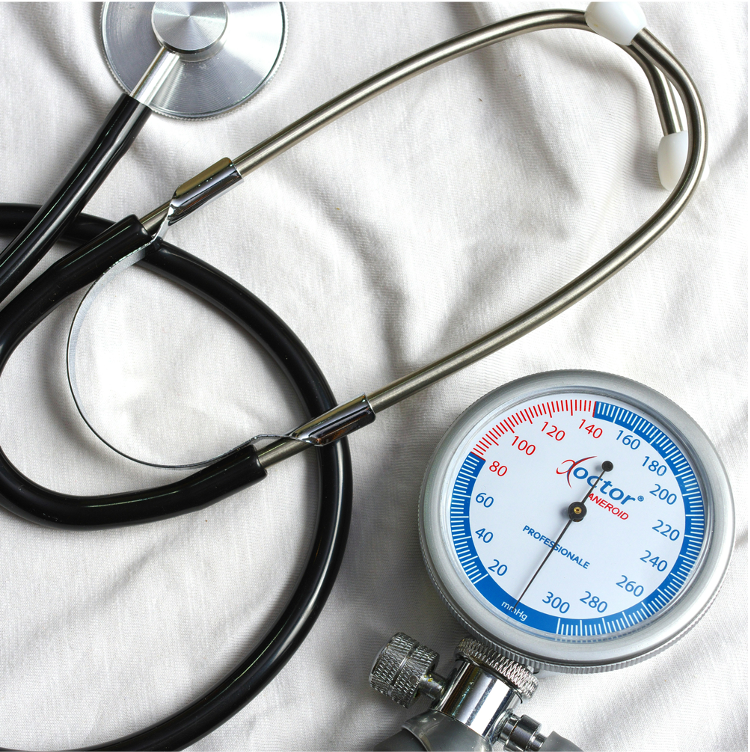Prevention as the key to health
Many serious illnesses can be prevented or at least mitigated through healthy lifestyles and early diagnosis. However, effective prevention requires holistic approaches at all levels of healthcare and the reinforcement of individual health literacy.
Non-communicable diseases (NCDs), which are primarily chronic, are the leading causes of death and disability worldwide.1) One in five men and one in ten women between the ages of 30 and 69 in the World Health Organization (WHO) European Region die prematurely from cardiovascular disease (CVD), cancer, diabetes or chronic respiratory disease. Approximately 1.8 million of these deaths could be prevented each year - either through reduced exposure to risk factors and appropriate preventive measures (60 percent) or through timely diagnosis and high-quality care (40 percent).
The economic consequence of preventable deaths is immense. According to the WHO, loss of productivity alone costs more than US$500 billion annually in the European region.1) This figure is calculated by multiplying the number of years of life lost by the gross domestic product (GDP) per capita. This estimate does not include direct medical costs or financial losses due to illness-related absences from work. NCDs not only reduce the quality of life for those affected but also place a strain on the individual’s social environment. As the disease progresses, the need for support from family and friends increases, which can also negatively impact the health and productivity of the latter. Reducing the burden of NCDs is currently one of the biggest challenges in health policy.
Prevention at various levels
 Symbolic image: Exercise and community are essential for well-being. © Jannes Glas via Unsplah
Symbolic image: Exercise and community are essential for well-being. © Jannes Glas via UnsplahMore than 200 years ago, physician Prof. Dr. Christoph Wilhelm Hufeland (1762–1836) recommended fresh air, personal hygiene, exercise, sufficient sleep and a moderate lifestyle as ways of preventing illness.2) The saying "Prevention is better than cure" is attributed to him. It forms the basis of preventive medicine, which is a field that analyses individual risk factors - namely diet, lifestyle, social environment and genetic predisposition – with the goal of promoting healthy behaviour.3)
Primary prevention targets healthy individuals and aims to maintain health and prevent disease. Typical measures include nutrition and exercise programmes, vaccinations and accident prevention strategies. Secondary prevention focusses on detecting asymptomatic diseases at an early stage, for example, through cancer screening programmes or the screening of newborns for metabolic disorders. It also includes approaches that stop an already diagnosed disease from deteriorating. Tertiary prevention aims to prevent the progression of an existing disease and the onset of secondary diseases by using measures such as rehabilitation. All areas of prevention require the active participation of the individual concerned. Healthcare is not a fixed package of measures; it consists of numerous components that are combined and continually adapted to individual life circumstances. Society and government have a responsibility to create suitable conditions and accessible services.
The Preventive Healthcare Act: fundamentally sound but needs improvement
 Symbolic image: Regular preventive medical checkups are an important part of preventive healthcare, enabling risks to be identified early and diseases to be prevented. © Immo Wegmann via Unsplash
Symbolic image: Regular preventive medical checkups are an important part of preventive healthcare, enabling risks to be identified early and diseases to be prevented. © Immo Wegmann via UnsplashThe German Preventive Healthcare Act (PrävG), which came into force in 2015, set out to improve the framework for cooperation among social insurance providers, federal states and local authorities, thereby strengthening prevention and health promotion for all age groups across all settings.4) In addition to requiring health insurance funds to invest a certain amount per member each year, nursing care, pension and accident insurance funds are also required to finance preventive programmes. These include preventive medical check-ups, exercise programmes as well as nutritional advice and measures to combat stress and addiction. In cooperation with state and local government institutions, health promotion projects are implemented directly in nurseries, schools, companies and care facilities. The goal is to raise early awareness of healthy behaviours and to establish this awareness firmly in society, and healthcare to be viewed positively and recognised by everyone.
Furthermore, employers receive financial and conceptual support to create a healthy working environment, for example through ergonomic workplaces, low noise levels and temperature control inside a building. Tax breaks are available for company fitness programmes, either in-house or through subsidised gym memberships. This helps reduce stress, increase motivation and has been proven to reduce sick leave. Health and early detection examinations are continuously being developed as part of the PrävG. To incentivise members, many health insurance companies offer a bonus to members as a reward for participating in preventive measures.
Ten years after it came into force, Dr. Klaus Reinhardt, President of the German Medical Association, says that the law is fundamentally sound but acknowledges that there is clear need for improvement: If we are to effectively prevent common, treatment-intensive diseases such as diabetes, depression and addiction, the medical profession needs to be involved on a much more comprehensive level. In addition, many opportunities to strengthen the health literacy of children and young people remain untapped, especially in schools and daycare centres.5)
Government needs to change the framework conditions
Oliver Huizinga, head of the prevention department at the AOK Federal Association (editorial note: Germany's largest statutory health insurance provider), is equally critical of the significant amount of untapped prevention potential in Germany.6) He calls on the federal government to "create conditions that make it more difficult to engage in unhealthy behaviour." In the Nanny State Index 2025, which examines government regulations relating to harmful stimulants such as alcohol, nicotine and soft drinks, Germany continues to rank last within the EU.7) This indicates that the country has the fewest regulations, bans and taxes, and therefore the lowest level of government protection against unhealthy consumption.
 A healthy, balanced diet is an important part of primary prevention. © Taylor Kiser via Unsplash
A healthy, balanced diet is an important part of primary prevention. © Taylor Kiser via UnsplashThe German Alliance against Non-Communicable Diseases (DANK) also laments the lack of political will when it comes to structural prevention, i.e., creating external conditions that promote health.8) More than half of all Germans are overweight, and one in five is obese. According to a forecast by the Organisation for Economic Co-operation and Development (OECD), obesity could account for around 11 percent of healthcare expenditure by 2050. Despite annual costs of approximately €30 billion due to more than nine million diabetics, there is a lack of evidence-based measures such as a sugar tax, advertising restrictions for unhealthy products targeted at children, increased exercise opportunities in daycare centres and schools and mandatory Nutri-Score labelling. Such approaches have already proven effective in other countries.
A study conducted by DANK in collaboration with the universities LMU (Ludwig Maximilian University) and TU (Technical University) in Munich in 2023 shows that the beverage industry's voluntary commitment, in place since 2018, to reduce the sugar content of soft drinks by 15 percent between 2015 and 2025 is falling significantly short of its targets.9) Researchers led by health economist Prof. Dr. Michael Laxy simulated the effect of a soft drink tax in Germany.10) In all variants, sugar consumption would be reduced as would the prevalence of type 2 diabetes, obesity and cardiovascular and kidney diseases. Depending on the tax model, savings of up to €16 billion could be achieved within 20 years. Laxy emphasises that structural prevention is significantly more cost-effective than individual behavioural changes, which means that future health policy must focus more on structural prevention.11) In addition to food, alcohol and tobacco regulations, noise and heat protection measures in public spaces as well as reducing air pollution are also necessary.
Prevention is effective
Governments can create suitable conditions, but ultimately, each individual is responsible for their own lifestyle. Around two-thirds of non-communicable disease deaths can be attributed to a handful of preventable risk factors, such as smoking, alcohol consumption, unhealthy eating habits, lack of exercise and obesity.1) All of these factors can be influenced at the individual level, and it is never too late to change one’s lifestyle. For example, individuals who quit smoking between the ages of 25 and 34 have almost the same life expectancy as lifelong non-smokers. Even in older age, quitting smoking significantly improves survival rates.12) This is because tobacco consumption not only damages the lungs and respiratory tract but also significantly increases the risk of cancer and CVD.
According to prevention researcher Prof. Dr. Stefanie Klug (Technical University of Munich), around 50 percent of cancers and up to 70 percent of CVD could be prevented through targeted measures.11) However, relatively few people use screening programmes. A study by the German Cancer Research Center (DKFZ) shows that by the age of 55, 77.1 percent of men and 44.5 percent of women have not yet had a stool test for early detection of colon cancer. 13) In order to better exploit the potential of screening examinations, Klug is therefore calling for changes in the approach. Invitations should include a suggested appointment date and GPs should be more involved. This has led to a significant increase in participation rates in other countries.11) The benefits of screening have been sufficiently proven scientifically: a recent study shows that breast cancer mortality among women who participated in mammography screening between 2009 and 2018 fell by 20 to 30 percent.14) Cervical cancer screening using Pap smears is even more effective: instead of 30 out of 1,000 women developing the disease, fewer than one does, as precancerous stages can be detected.15) With the vaccination against human papillomavirus (HPV) for adolescent girls and boys, effective protection against cancer-causing viruses is available for the first time.16) Preventive measures are also very successful in dentistry. Since 1989, dental health has improved significantly in all age groups as a result.17)
Preventive lifestyle
The following can significantly reduce an individual’s risk of developing NCDs:11)
- Do not smoke
- Eat a healthy diet with fruit, vegetables and nuts and low in salt (< 6 g per day), sugar and red meat
- Get enough sleep (7–8 hours per day)
- Minimise stress
- Get enough exercise: the WHO recommends at least 150–300 minutes of moderate-intensity physical activity or 75–150 minutes of high-intensity physical activity per week. Muscle-strengthening exercise 2–3 days a week brings additional benefits.
- Adequate fluid intake: women should drink a total of 2 litres of water per day, men 2.5 litres. About 20 percent is contained in solid food.
- Avoid exposure to toxins, especially alcohol
- Adequate sun protection
Prevention pays off economically
Only about three percent of statutory health insurance expenditure in 2023 was allocated to prevention.18) Healthcare in Germany is still primarily focussed on treating disease. However, steadily rising costs mean that this approach needs to be re-evaluated. According to the Association of Research-Based Pharmaceutical Companies (vfa), prevention should be viewed as something that society as a whole is responsible for rather than an additional health service.19) Cross-departmental action, low-threshold services and performance-based financing are essential. The German Society for General Practice/Family Medicine (DEGAM) also advocates for more time to be dedicated to prevention in GP practices and for a reduction in bureaucracy.11) The economic benefits of preventive measures are challenging to quantify, as savings are often indirect and typically become apparent only in the long term. According to calculations by the German Social Accident Insurance (DGUV), the return on investment for occupational preventive measures alone is at least 2.2. This indicates that every euro invested yields more than double the benefit.20)
Baden-Württemberg committed to prevention
Preventive medicine is becoming increasingly important in the healthcare sector, and opens up new perspectives for innovative, interdisciplinary business models. In Baden-Württemberg, for example, companies and research institutions are developing novel vaccines, identifying biomarkers for disease prognosis and utilising artificial intelligence for the early diagnosis of skin cancer and sepsis.21) - 25)
In the context of tertiary prevention, personalised approaches are increasingly being developed to slow down the progression of diseases. Practical aids for everyday life are also being tested, such as glasses that promote balance to prevent falls.26) Smartphone-based systems are also increasingly being used. These include the tala-med Cardio app for the prevention of CVD.27) An easy-to-understand app, available in six languages and therefore suitable for a broad target group, tala-med Cardio was developed as part of the Primary Care Working Group of the Competence Network Preventive Medicine Baden-Württemberg, which brings together the five medical faculties in Baden-Württemberg.28) It connects stakeholders in the field of prevention and facilitates interdisciplinary solutions. International knowledge transfer is supported by BioLAGO, the cross-border health network of the four-country region around Lake Constance.29)
Since 2009, the Foundation for Health Prevention Baden-Württemberg has also been promoting low-threshold programmes and initiatives that strengthen health literacy, particularly among vulnerable populations.30) With the Prevention Alliance Baden-Württemberg, founded in September 2025, the Baden-Württemberg government aims to further improve healthcare and literacy, because for prevention to be effective, a holistic approach is needed.31)